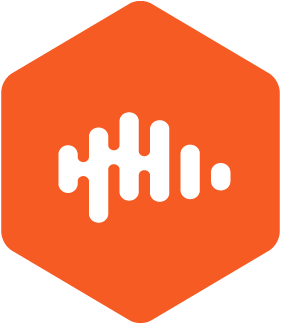Listen
on this episode
Why are your networking emails and connection messages being ignored? Is it the wording? The timing? Or are they just blending into the sea of AI-generated pitches and spam flooding inboxes every day?
It’s no secret that reaching out to someone whether on LinkedIn, via email, or another platform, has become harder than ever. People are more skeptical, and generic messages are quickly dismissed as spam. But making the right connection can open doors to new opportunities, insights, and even career (and life) changing conversations.
So, how do you write a networking email or LinkedIn message that actually gets a response? It comes down to three key elements:
- Lead with emotional connection to create familiarity.
- Clearly state who you are and why you’re reaching out.
- Make a simple ask they can easily say ‘yes’ to.
Let’s break down each part in detail.
1. Lead with Emotional Connection
The first line of your message is crucial—it determines whether the recipient will keep reading or move on. If it doesn’t connect emotionally, it might get lost in the sea of generic messages.
To make your message stand out, show them that you’ve taken the time to learn about them, their work, and what they care about. Avoid generic lines like:
- “Your experience looks interesting.”
- “I’d love to connect.”
- “I think it’s amazing what you do.”
Instead, find an authentic emotional thread that creates a real connection. Here are some common ways to do this:
- Geography: You both live in or have lived in the same city.
- School: You attended the same university or studied a similar major.
- Career Change: They made a career pivot you’re considering.
- Causes & Volunteering: You share a passion for a nonprofit or cause.
- Former Company: You worked at the same company, even at different times.
- Personal Interests: Their profile mentions something like being a parent, a dog lover, or a sports fan.
Example of a Weak First Line
“Hi Laura, I came across your content, it’s powerful & I’d love to connect.”
Example of a Strong First Line
“Hi Laura, I see that you used to volunteer with HOHMSPN. I attended one of their webinars last week, and their mission speaks to me as a military spouse working to piece together my career.”
By making the first line relevant and specific, you immediately show that your message isn’t just a copy-paste request.
2. Who You Are & Why You’re Reaching Out
Once you’ve captured their attention, clearly explain who you are and your purpose for reaching out. The key is to be direct, specific, and avoid sounding like you’re just “expanding your network.”
Instead of vague networking requests, position your outreach as a focused effort to learn from their experience. A simple structure is:
- Who you are: “I’m in the middle of a career change and exploring [industry/role].”
- Why them: “I saw that you transitioned from [field] to [field], and I’d love to learn about your experience.”
Example of a Weak Explanation
“I wanted to connect with you because I saw you’re a coach and I think it’s amazing what you do.”
Example of a Strong Explanation
“Hi Laura, I see you’ve worked for Fullstack Academy and HTYC as a Career Coach. Right now, I’m researching companies that hire career coaches vs. stepping out on my own.”
This version makes it clear why you’re reaching out, making it more compelling for the recipient to engage.
3. The Simple Ask
The final piece of your message is the ask—and this is where many people go wrong. The best asks are:
- Specific (so they know exactly what you’re looking for).
- Easy to say yes to (low time commitment, straightforward request).
- Clearly stated (don’t bury it in a long paragraph).
Weak Ask
“I’d love to pick your brain sometime and hear your thoughts.”
Strong Ask
“Would you be open to a quick 15-minute chat about your experience transitioning into data analytics?”
This makes it easy for them to say “yes” because they know what’s expected and that it won’t take up too much of their time.
Common Networking Message Mistakes
To make your outreach more effective, avoid these common pitfalls:
- Too Wordy – Keep it short and to the point.
- Too Much Information – Don’t spill your entire career story in the first message.
- Too Generic – If your message could be sent to 100 other people, it won’t stand out.
- Too Formal – Write how you naturally speak. Keep it conversational.
- Burying the Ask – Make sure your ask is clear and easy to find.
Final Thoughts
A great networking message is about making a real connection, being intentional, and making it easy for the recipient to respond. By leading with an emotional connection, clearly stating why you’re reaching out, and making a simple ask, you’ll significantly increase your chances of getting a response.
So, before you hit send, ask yourself: Does this message feel personal, purposeful, and easy to respond to? If the answer is yes, you’re on the right track!
Introduction 00:05
This is the Happen To Your Career podcast with Scott Anthony Barlow. We hope you stop doing work that doesn't fit you, figure out what does, and make it happen. We help you define the work that is unapologetically you, and then go get it. If you feel like you were meant for more, and you're ready to make a change, keep listening. Here's Scott. Here's Scott. Here's Scott.
Scott Anthony Barlow 00:29
If you've sent any kind of networking or connection emails in the last year, you might wonder, why are they being ignored? Why are you not getting responses? Is it the wording? Is it the timing? Or is it simply that they're getting lost in a flood of AI generated pitches and spam? When I first started this podcast, way back in 2013, LinkedIn was the go to place to connect with someone about your career. And while it's still possible to connect with people there, the landscape has drastically changed. People are now much more skeptical when it comes to their LinkedIn messages, thanks to the overwhelming number of sales pitches that are flooding them constantly, and also with the influx of AI. That's the case on almost every platform on the internet. So here's what we're gonna do today in this podcast, we're gonna walk through the best ways to identify the right place to reach out to someone, whether it's LinkedIn, email, another platform, and then how to craft a message that maximizes your chances of building a meaningful connection right from the start.
Scott Anthony Barlow 01:36
When it comes to reaching out to people with the purpose of exploring the new industry or role or a company, the most common term you hear is networking, of course, but we like to focus on this in a different way, shock and surprise, right? Here at Happen To Your Career, instead, we refer to this step of the career change process as test driving conversations, and it's part of the experimentation stage when you're trying to determine what makes an amazing fit for you. So before we jump in, I just want to quickly explain the difference. Networking and test driving conversations can both involve connecting with others, but they come at it from very different angles. Networking often is either just for the purpose of connecting, or it's for a transactional purpose, a very focused purpose, a means to an end, expanding your professional circle or unlocking career opportunities.
Scott Anthony Barlow 02:35
So what are test driving conversations? They're much more about exploration and discovery. You're not pushing for anything right away. Your goal is to have a low pressure conversation to simply learn if there is a fit in whatever area it is that you're exploring, whether it's the people, whether it is the organization, whether it is the type of role that you're investigating. The perfect way to approach someone without the expectation of immediate outcome. That's the additional benefit. And then they can spark genuine connections that might lead in the future to somewhere unexpected. But we don't want to expect that. Okay, so we go into this much more in detail in a past episode, which we'll link in the show notes here.
Scott Anthony Barlow 03:20
Let's discuss a question that most people never ask. Where should you connect with someone? Most people automatically assume it should be LinkedIn. But is it? After all, LinkedIn is flooded, inboxes are overwhelmed. And if the person you are trying to connect with has 1000s of followers on any social media, chances are, their feeds are filled with pitches too. So what's the solution here? And as you can imagine, there's no easy answer. Often, when we're working behind the scenes with clients, we are looking at every single situation on a case by case basis. But one general rule that you can use is it's all about meeting people where they are, where they're spending their time, where they're already giving their attention to. You need to figure out what they care about and where they're most active. Sometimes that's LinkedIn. Sometimes email is going to be the best way. Sometimes it might be through another type of social, like Instagram or Facebook, or even contacting them through their personal website. The key is understanding where you're most likely to get the best response, and giving some kind of thought into where are you going to get the best response. So I want to give you a couple examples as we go along here. Reaching out on text could be effective in some cases, but let's be honest, in certain situations, it could also feel intrusive or creepy, depending on what the context is. So always think about the environment that you're entering here. Be sure to connect with them in a space that feels comfortable and natural. The goal here is to reach out in a way that aligns with how they engage, wherever they engage, that's going to make them feel much more comfortable. So keep that part in mind as we go here. But if they're on Instagram or Facebook or LinkedIn or X or what about even if they have a page or write a continuous post on Medium, YouTube channel, something else. Google, by the way, is going to be your very simple best friend to figure out what places they are active online. On LinkedIn, specifically, when you search for them, you can actually pull up all the activity that is referenced by them. You can't see their individual messages, obviously, that other people have sent them or they've interacted with behind the scenes, but you can see the public activity, and this will at least start to give you a clue as to "is this an area that they are responsive on?" Okay, so you can do the same thing for other avenues too. Here's a recent example from someone that we were working with and helping them to understand, you know, where somebody is active. We learned that the individual they were trying to get in contact with had spent quite a bit of time posting on Medium, you know, had, you know, maybe 8 or 10 posts on there, and not long or not short posts either, these were pretty extensive. So clearly, this individual had put some time into it, and it was semi-recent. So if I wanted to build a relationship with this individual, then I'm gonna go to a place where they've already put time and effort in because that heightens the indication that there's some level of emotional connection in that particular place. So I'm gonna go read through and I'm gonna make a comment and just interact with them in a way that is useful on their Medium page. Okay, so here's what that looks like in that case. Read through all of their articles and share the parts that I loved in particular, and thanked them for, you know, putting those posts together. Did we comment on every single article? No, just choose one and make references that read the others too. Now, here's something that is important. You can't just do this as a tactic. You have to actually mean it. If I read all those articles, and I hated every minute of it,definitely not going to do this. We all have built in BS meters that will go off like crazy if we see that somebody is not being genuine. So this, of course, comes from many years of evolution, and it still works well today, so we can't fake this. Okay, if you can't find where somebody is active anywhere online, you may have to jump into the next level of sleuthing, which might be a scavenger hunt of figuring out what is their email address. And you can try formatting for how their company uses email addresses, you know, maybe it's the first-dot-lastname@company.com maybe it's first-initial@lastname@company.com usually you can find other people's email addresses, and this type of detective work can be really useful. But when we're doing this work, again, behind the scenes, we're using tools like Hunter.io or BeenVerified.com and then that helps us minimize some of the detective work by providing more reliable contact information than those email addresses for us. You don't have to do that, but I want to just expose you to there's a variety of methods out there in order to be able to reach the people that you want to reach here. And the other thing here is you can engineer familiarity and engineering familiarity becomes a really helpful strategy. For example, if I come across somebody the first time, and I've never heard that person's name or seen their image before, then it's going to be unfamiliar. However, if I come across them again a few days later, if I'm not thinking about it very hard, then my unconscious is going to think that there's something familiar with that which that actual activity tends to lend an additional amount of trust. Okay, so I don't want you to misuse this instead. We do want to use this for good in order to build relationships. But I want you to recognize that when people see your name in more than one place as or multiple times over, then the more familiar they become with it, which makes you feel like less of a stranger. Okay, so what you might do is contact them in two different places spread out over a short period of time. This might be sending them a LinkedIn connection request and then emailing them later. It might be commenting on their Medium article and then a few days later, sending them a message on LinkedIn. Okay, all of the research and sleuthing, once we've done that, this takes us to the tactical side, which is the reach out itself. So we found them. We know the best place to contact them. Now, how do you actually contact them? What do you say? What do you put into the message? I want to give you a general formula that works very, very well overall here. When the purpose is, and it has to be for this purpose, if it's for a different purpose, this is not going to be effective for you. When the purpose is for test driving conversations or exploration phase, the goal here is to be able to get to a place where we can have an actual conversation, build the beginnings of a relationship, but more importantly, begin to learn something that's useful in your career change or career fit process. So that's why we call this the experimentation phase overall. So part number one, let's dive into each part here, and then I'll come back and define it for you. Part number one is led with emotional connection to create familiarity. Part two is share who you are and answer the question, "why are you reaching out." Part three is the simple ask that they can say "yes" to.
Scott Anthony Barlow 11:14
Okay, number one, leading with emotional connection. The first line of your message, it's crucial. It's your chance to grab their attention, and if it doesn't connect, either rationally or emotionally, it's going to get lost in the sea of other people sending very generic messages. So if this first line doesn't work, it's likely they'll never even see the second line. They'll never make it that far. Okay, the stronger the emotional relevance in that first line, the more likely your message is going to stand out and the more effective it's going to be. This is the line where you show them that you've taken the time to learn about them, their work and what they care about. That's the opposite of what spam is doing, right? Spam is unsolicited, unrelevant, not wanted, all of those things, right? So here's what all the messages in my inbox sound like. "Scott, your experience looks interesting." It's just so generic that it could be anyone versus that customized personal connection. So I want to share a couple of other examples here that Laura, who is a coach on our team, she shared with me just by literally pulling some things out of her LinkedIn inbox here. This one says, "Hi, Laura, I came across your content. It's powerful, and I'd love to connect." This other one says, "Hey, Laura, I wanted to connect with you because I saw that you're a coach, and I think it's amazing what you do." That's great and not very specific, and certainly really doesn't create much of an emotional connection, especially when giving messages like this constantly. It doesn't show that the person made any effort to get to know Laura. Maybe they scanned a profile for all of three seconds. Maybe not even that. The best connection is finding that commonality, finding that particularly emotional commonality and thread, whether it's a shared experience or a common interest, maybe you both went to the same school, maybe their work resonated with something that you're going through right now. How about that for an emotional connection? Here are a few ideas to get you started on where you might find some commonalities. This could be geography. You're both in the same city, you're originally from that city, used to live in the same place. This will create familiarity. Sometimes it takes an extra degree in order to make an additional emotional connection. Another example would be school. Alumni of the same university, perhaps even the same degree or same school within the university. Could be a career change. Maybe this person made a dramatic career pivot, maybe that's part of their story. Maybe some of the changes that you can see along the way are relevant to you as well. Okay, another area could be a volunteer cause or a, well, let's just call it a cause that they care about. You have a commonality and desire to help this population, or you volunteered in a similar capacity. Maybe it's a former company. You both used to work for the same organization. For example, you know, I used to leverage this. I used to work for Target. Target was a phenomenal organization for me to work for. I had a great experience there, and I found that many other people have too. Not everybody in the world, but many people have. And so that's something that I share. Could be something else, of course, that they mentioned in their profile, their about section might reveal being a parent, maybe they have pets, they're a dog parent, a football fan of your favorite team, maybe something else that creates that trust, familiarity, connection in an emotional way. By showing you understand their journey and care about their perspective, you're building a real, meaningful connection from the very start, and that's what's going to get their attention.
Scott Anthony Barlow 15:03
Okay, part number two in our formula here. Who are you? Why on earth are you reaching out? This next part of the message is about explaining who you are in a way that directly ties into why you're reaching out to them. We have to answer those questions really quick because, as humans, we're constantly scanning, like, what is the relevant thing to me? Why is this even happening? What is going on here? That is something that we always looking for. So if we even just answer those questions up front, it makes it easy for them to focus on the connection part, right? Which then allows them to focus on the ask part, which we'll talk about here in a minute. The key here is to be clear, specific, and make sure they know you're not just another person looking to network or connect or expand their circle. Oh, my goodness, if I get another email that says, "I'm looking to expand my circle", you have actually a focused purpose that is, in fact, relevant to them, maybe even useful to them. The "who you are" part that was relevant to them, might mention that you're in the middle of a career change and you're wanting to learn more about their particular role because they've had experience there. Or it might just be that you're not just reaching out for a vague network reason, instead, you're making an effort to understand a space better, like an industry, or like a particular organization, maybe they have background or experience that aligns with your goals. You've done your research. You're indicating this here in this section. And by the way, when we say this section, we're often talking about a line or two. We're making it very simple. We'll come back to that here in a minute. Using language that shows intentionality is important here, for example, "I saw that you" versus "I found that you". This is where we can leverage language that shows intentionality and shows forethought as well, which creates a more valuable message. For example, saying, "I saw that you" or "I found that you", I prefer saw because it tends to be more informal in conversation. But either way, can work in certain circumstances. It shows that you've taken the time to look at their background, it lets them know why you specifically think they are the right person that you're trying to connect with and engage with. For example, it might be, "I saw that you transitioned in the day to analytics after a background in education, and I'm currently exploring whether it's the right path for me."
Scott Anthony Barlow 17:30
All right, let's go on to part number three, the ask. Finally, last but definitely not least, maybe most important, but the other two parts set this up so it can be successful. Always end with a direct, clear ask. It's got to be simple. Most importantly, it has to be easy to say "yes" to. Sometimes there can be so much thought that goes into making it easy to say "yes" to and reducing cognitive friction, whether it's asking for a 15 minute chat, a piece of advice, or insights about their journey, we have to make it easy for them to do or say "yes" to no matter what it is. Okay, what I'd like to do now is I want to go over some specific examples of how to craft a message. Let's go back to some of Laura's LinkedIn messages earlier. "Hi Laura, I came across your content. It's powerful and I'd love to connect." Okay, pretty generic, right? Complimentary, but pretty generic and unspecific. And it's powerful, is a powerful word, but it's not particularly emotionally connecting without additional context. So here's a better example. "Hi, Laura. I saw that you worked for Full Stack Academy and HTYC as a career coach. Right now, I'm researching companies that hire career coaches versus stepping out on my own." Okay, now that becomes much more relevant to Laura, right? Here's the other one that we talked about. "Hey, Laura. I wanted to connect with you because I saw that you're a coach, and think it's amazing what you do. Blah, blah, blah". All right, better example for that might be and here's how we can make it better. "Hi, Laura, I see that you used to volunteer with Homespun. I attended one of their webinars last week, and their mission speaks to me as a military spouse working to piece together their career." Okay, much more relevant. And we are signaling to, in this case, Laura, that we have a whole bunch of information about it for something that she likely has a connection with. Very, very different results, right? And this is just part number one. As you can imagine, this can take a little bit of time and energy to be able to put together. It takes some forethought, but they help the receiver know precisely that you took the time and energy to get to know them, which means that if you're showing care and you're showing relevance, there's a higher chance that they might reciprocate, right? In a moment, I'm going to show you some actual messages that our clients had worked on behind the scenes, and then we've worked with them to be able to improve and turn it into a much more effective message. But before we do that, I want you to be able to listen for some of the common problems and look for those common problems so that you can recognize them as we're going along.
Scott Anthony Barlow 20:30
Number one, too wordy. Nobody wants to read a long message. Not for the sake of reading a long message, keeping it short and sweet, concise is important. We want to be able to grab their attention in as few as words possible and get to the point without overwhelming them. How long? Well, as long as that takes, and a lot of times it can be shorter than most people think. The second mistake is too much information. We don't need to share everything right away. We need to share just enough. Keep it focused. Leave room for a conversation. Let them ask follow ups if they're interested. Number three here, is it too generic? Could it be sent to anyone? This is the, "your message is powerful or whatever". If your message could be copy and pasted to 100 other people or even two other people, it's probably not personal enough. Take a minute to show that you've researched them, you understand them, it's creating relevance, you're a real person reaching out. Another area that people struggle with is making things too formal. There can be certain occasions to make it formal, but most of the time, I want you to write how you talk. A message that sounds like a stiff letter is not going to connect. It's going to come across as weird. And we want to keep it conversational and approachable, like you're talking to a friend. Again, there's exceptions, you know, certain academic professions, you know, there could be exceptions, and depending on what is the context in the modality in which we're contacting somebody. But other than that example, the general rule is we are trying to build relationships, which means we are conversing. We're talking to friends, new friends. The ask at the end, if that is buried, then that's going to be a challenge. So number five is make sure that your ask is easy to find instead. Don't hide it at the end of a long message, make it clear, simple and easy for them to say "yes" to. All right, let's look at a few of these messages here. This first message, "Hi, Tamara. I hope my unfamiliar name in your inbox sparked the curiosity and not your desire to resign this email to the spam folder. I genuinely am seeking to connect. I found your LinkedIn profile when I was searching for information on what it is like to working in the Customer Success field. I saw that you have experience and strategies supporting organizations to enhance their digital experiences. On top of that, your post on LinkedIn shows that you have enthusiasm for what you do. I currently work as a store manager for a big box retailer, leading the team of 115 people. I'm at a crossroads in my career, and I'm starting to do some high level research on adjacent roles. I feel privileged to hear more about your experience working as a customer success manager or other insights you have. Would you be open to having a 15 minute call? I've got a few pointed questions about customer success in the software as a service industry, and would love to hear a little more detail about your experience thus far in the role. If yes, I will make it as easy as possible to find a time that works for you with gratitude and appreciation." Okay, what do you notice about this? First of all, it is very long. It is very long. And we're not talking... when we say long, we're not actually as much talking about the length, we're talking about it has enough unrelevant or not useful items in it to make it feel long, right? Okay, let's go over the improved message here. What you'll notice is it is functionally a lot shorter. We've eliminated a lot of the pieces that are either obvious or not adding value. We eliminated entire sections, in fact. So instead, here was what we came with. Improved message says, "I hope my unfamiliar name in your inbox sparked your curiosity, and they don't end up in spam, winky face", which already feels much more conversational, right? "I found your profile when I was searching for information on what is like working in customer success field. I saw that you currently work at Shutterfly in a CS role. I constantly use Shutterfly, so I was intrigued about your work there. I currently work as a store manager for a big box retailer, leading a team of 115 people. I'm at a crossroads in my career and starting to do some high level research on adjacent roles. I'd love to hear more about your experience working as a customer success manager, or any other insights you have." And here's the ask, "Would you be open to having a 15 minute call? If yes, I'll make it as easy as possible to schedule. Thanks." All right, so we've taken out massive sections. The other changes. Let's go over what changed here. Removed, "I am genuinely seeking to connect." This is kind of like an inside joke, almost. Or when somebody tells an inside joke, if they're not on the inside, it's not funny. It should be obvious to those people. And that same concept transferred over to here, not about joking, this is not a joking manner, if it's not already obvious that you're genuinely seeking to connect, then you've lost that person. You don't want to have to explain that you're genuinely seeking to connect, just like you don't want to have to explain that you're telling an inside joke. Instantly, no longer useful. We take out the word LinkedIn. If we're messaging them on LinkedIn, it's obvious that we're using LinkedIn. Okay, so there's all kinds of small pieces there. We're just removing the pieces that are irrelevant. Okay, "what is it like in customer success supporting organizations?" This is missing specifics. We needed something to show that this message is intentional for the person, like, in this case, the company name, and then we show our emotional attachment to that company. We don't know for sure if this person has any kind of emotional attachment to Shutterfly, but Shutterfly is an organization that has a lot of raving fans that also work there. Okay, "I'd feel privileged to" this can be great in certain circumstances, but it tends to feel very formal. If this is how you talk, and it's pretty likely that the other person will receive it in the same way that you talk, then I would say, go ahead with it. And that might be an indication. Otherwise, this feels incredibly formal. If this isn't something you wouldn't say out loud, then let's omit it. Let's get rid of it. Write how you talk, not how you write. The ask, originally, was way too long, so long. We simplified it so that it's clear and concise and not buried amongst other paragraphs. The ask is simple. "Would you be open to having a 15 minute call?" By the way, in this case, we're asking for 15 minutes because that's something that somebody can say "yes" to. It's easy to answer. And what we're not doing here is dumping, we're not saying, "just tell me a time that you can do and I will make it happen." That can work, but now, if I've asked that type of question, and that's now my ask, then I'm putting all that cognitive friction onto the other person. They have to look at their schedule, they have to think through what's going to be a good time for them, and it seems like we're making it easier on them, but in actuality, we're dumping up a lot of decisions onto them. Decisions create cognitive friction. So what is a better decision that they can simply say "yes" to? "Would you be open to having a 15 minute call?" "Yeah, sure. I'm open, especially if you're telling me you're gonna make it easy on me." Done. All I have to do is respond and say, "yes". Okay, we shrunk this message by about a third. Makes it more digestible. It's easier to read.
Scott Anthony Barlow 28:16
Could we continue to improve this even further? Yeah, absolutely, there's opportunity. But let's go on to another one, another example here. All right, so this one, and read it out here first says, "Greetings, Gene. I hope you do not mind me reaching out, but I saw your profile on LinkedIn, which led me to your portfolio, which is impressive. I saw that we both live in Charlotte, North Carolina area, and have a background in mechanical engineering. I'm researching different careers, sort of an experiment to understand if they might be a good next step for me professionally. Would you be willing to spare 20 minutes to connect so we can discuss your experience as a data analyst? Please understand I'm not looking... I'm not asking for help getting a job. I'm trying to learn about your experience and the role to understand it better from someone who has walked some miles in those shoes. I would appreciate any time and experiences you can share. Thank you." Okay, what can we improve here? Well, we can certainly make it more specific here. Let's look at the improved version here, and then we can analyze what changed. We changed it to "Hi Gene, I found your profile on LinkedIn, which led me to put your portfolio. I enjoyed reviewing your fraud detection projection" Whew, that's a mouthful, "done in SQL. I recently completed a SQL course, so seeing new angles of projects gets me thinking outside the box. I'm also located in the Charlotte, North Carolina area, and have a background in mechanical engineering. I'm researching different careers, sort of an experiment, to understand if it might be a good next step for me professionally. Would you be willing to share your experiences as a data analyst on a 15 minute call? If yes, I'll make it easy to find a time to connect by a zoom or a phone. Thank you. Timothy." Okay, what changed? Well, we changed to a much more informal greeting. If you remember it said "Greetings Gene" which I mean, could be a strategy to if we need to get a laugh or something like that, but I don't think that was going to be effective in this case. So we changed to an informal greeting that is more how this person would speak, like, "Hey or Hi," and we removed the part about, "do not mind me reaching out" and "impressive portfolio". As not only is this language is overused, it sounds robotic, it sounds AI generated, and it sounds like a start to a sales spammy message. This first line is critical. You've got to create connection, commonality, or rapport in one way or another. It's even better if we can level up and find an emotional connection too. Okay, so we changed the word "saw" to "found". "Found", in this case, can even level up. We talked about that briefly in being intentional in saying "saw" or "found", but in this case, we could actually show additional intentionality in certain cases. "Found" can imply more intentionality in certain cases, perception wise. Simple words can make a big, big difference. This, by the way, is when you've done this a lot, you start to see what works over and over again and see what creates better and better results. And you notice observationally, those different pieces, or you can pull in other psychological practices, or even, you know, marketing practices or sales practices that involve psychology, and you can leverage those in this type of reach out messaging too. Okay, another thing that we did here, we changed the impressive portfolio to show a more specific aspect about what was impressive. And in this case, what we're doing is we're showing... We actually took the time to dive into their portfolio by showcasing those specifics. We also changed "please understand that I am not asking for help" this sounds pretty formal and could be useful, but this is often better saved for the second email. I don't think it's really useful in the first email after they say "yes", this could be mentioned in that second email, or it could be mentioned once you're actually having a conversation with them too, "Hey, I want you to understand I'm actually not here asking for help. I'm not asking for a job. That's not my intention here. I truly want to learn. I truly am interested in learning so that I can find the right fit." By the way, we also eliminated "to spare". It sounds a little awkward. Took this out to simplify our ask where it had said, "Would you be willing to spare 20 minutes?" Yeah, we took that out. And then we clarified call or zoom so it makes it obvious that we're not meeting in person, because if we're in the same town, then that could be confusing. And we also want to try and make it easier. Sometimes, it can be relevant to ask for a meeting in person. This one not the case. We also show that we want to make it easy and low mental lift. So again, we're making it easy for them to say "yes" here by asking, "Would you be willing to share your experiences as a data analyst on a 15 minute call? If yes, I'll make it easy to find time to connect by zoom or phone." All of that is built in. We didn't have to have a separate thing saying, "Oh yeah, we totally, you know, could do a zoom or a phone" or anything like that. It's literally built into those two lines. We don't have to include extra words. Here's what didn't change. We didn't change "Charlotte, North Carolina" because we're leveraging geography to show a connection to this person, and proximity of location can also build trust. We also didn't change "researching different careers" this gives context, as we talked about earlier.
Scott Anthony Barlow 34:00
All right, I want to share another important piece here, particularly for LinkedIn. LinkedIn, the way that you engage over there is often you are requesting a connection, and inside that connection request, you are given the option to add a note, and this is a must use. So many sales users on LinkedIn write a generic message that gets ignored or they send no message at all, they simply send a request, this is your opportunity to stand out by creating a customized and compelling message that gets you to be set up for a "yes" in certainly accepting your request, but maybe a later "yes" too, in being able to connect at a different level with this person. You have to keep this below 200 characters at this point in time when I'm recording this, they have it set at that limit, and your only goal here is to get them to accept the connection. You don't need to put in tons of other information. You don't need to, that's not a space to ask for a conversation. Instead, you can leave that for the following message if they do, in fact, accept, but you want to get to the point where they can accept the message request and then build in a little bit of context if you're going to continue to interact with them. All right, so I want to show you an example here. We took this original where John had said, "Hey, Karina. Greetings, Karina. I like the work you did on your GitHub portfolio. Thank you for sharing it on your profile. Will you mind connecting with me on LinkedIn for network building with other data analysts and enthusiasts? If not, no worries. Have a great evening. Respectfully." Okay, this is okay. It's not terrible. It's not particularly specific in a lot of different areas, but it does provide a little bit of context for reference. Building, you know, building network with other data analysts and enthusiasts. But we want something that's great, not just okay. So the improved message would sound like, "Hi, Karina. I saw your profile that you pivoted from teaching to data analytics. That is awesome. Would love to connect as I'm making a similar switch from HR to data analytics." That's it. Super short, right? We reworked the first sentence to be less generic. Originally it said "I liked the work that you did on your GitHub portfolio. Thank you for sharing it on your profile." Sounds robotic, right? And it also we now are showing that we did our homework. We understand a bit about them and their story, and we show the instantly within that first line the "why them", which in this case, is making a similar career switch to what this person is. We made the message more brief to fit the character limits, and we took out the "respectfully" to be less formal and instead make it more conversational.
Scott Anthony Barlow 36:53
So there you have it. These are some of the most effective strategies for crafting a reach out message and even a formula that actually gets noticed. And I hope the examples were particularly helpful here. The key is emotional connection, clear intent, keeping it simple. If you take the time to understand the person that you're reaching out to and show genuine interest, key point being genuine, and then also make it easy for them to say "yes", you're already ahead of the game, and it's much more likely that they might show genuine interest in you and reciprocate. The best part of this approach is you're not just freaking networking. Does anybody really actually want to just freaking network? We're actually test driving. We are building real relationships. We're building meaningful, genuine connections that can help you explore new opportunities and grow, and maybe you have the opportunity to help that person in the future too. Who knows where this is going to lead for both of you.
Scott Anthony Barlow 37:50
If you found this episode helpful, by the way, we'd really appreciate it if you would share it with somebody else who you think could benefit. And if you're thinking about making a change in your career and you want to see if we can help or the very best way that we can support you, here's what I want you to do. Just pick up your phone right now and email me directly, Scott@happentoyourcareer.com, you can put 'Conversation' in the subject line, and then I'll connect you with the right person on my team, and we can figure out the very best way that we can support you and help build a plan that's going to fit what you need.
Scott Anthony Barlow 38:28
All right, here's what's coming up next week right here on Happen To Your Career.
Speaker 2 38:33
You know, when a chapter is over, you're like, "I have learned everything that I can learn from this experience, and I wanted to go home." And I just had this calling of like, "I think I've learned everything I need to learn."
Scott Anthony Barlow 38:45
What should my next step be? It's the question we hear over and over from people wanting to make the shift to more fulfilling work. But here's the truth, it's actually the wrong question to ask. True fulfillment doesn't come from following a step-by-step guide. Surprise! There's no one-size-fits-all checklist to get a perfectly fulfilling career. Because real fulfillment, well, turns out, it's different for everyone. Okay, this is probably not a massive surprise to you if you've listened to this podcast before. It's not an external process that you have to get through, it starts with you. So instead of starting with, "What should I do next?" Ask yourself, "What do I actually want?" That simple shift could change everything.
Scott Anthony Barlow 39:31
All that and plenty more next week right here on Happen To Your Career. Make sure that you don't miss it, and if you haven't already, click subscribe on your podcast player, so that you can download this podcast in your sleep, and you get it automatically, even the bonus episodes every single week, sometimes multiple times a week, until next week. Adios, I'm out.
Sign up to receive email updates
Enter your name and email address below and I'll send you periodic updates about the podcast.

Ready for Career Happiness?
What Career Fits You?
Finally figure out what you should be doing for work
Join our 8-day “Mini-Course” to figure it out. It’s free!
Featured Episodes
View all episodes
October 16, 2023
537: Rethinking Informational Interviews: Stop Doing Them & Start Test Driving Conversations
on this episode If your goal is to get a job, sure, you can stick with informational interviews. But if you’re after a fulfilling career that pays really well, then you must be willing to do things differently than the rest of the world. The internet and self-proclaimed job experts have been chanting the mantra […]
Listen Now

September 4, 2023
531: Contacting CEOs and Busy People Made Easy (For People Who Hate Networking)
on this episode I get hundreds of emails each day. So much so that I use 3 different systems plus a person on my team to filter them all. This is true for many executives, managers and other people you might want to get to know and build a relationship with. They have a lot […]
Listen Now





